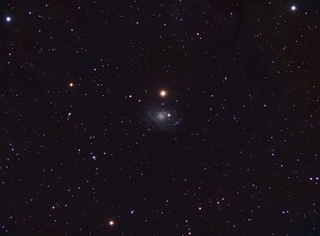
- Constellation: Cetus
- Right Ascension: 00° 14′ 03.989″
- Declination: –23h 10m 55.53s
- Distance: 21.7 million ly
- Galaxy Type: SA(s)dm
NGC 45 is a spiral galaxy located in Cetus. Many distant background galaxies are also visible in the image.
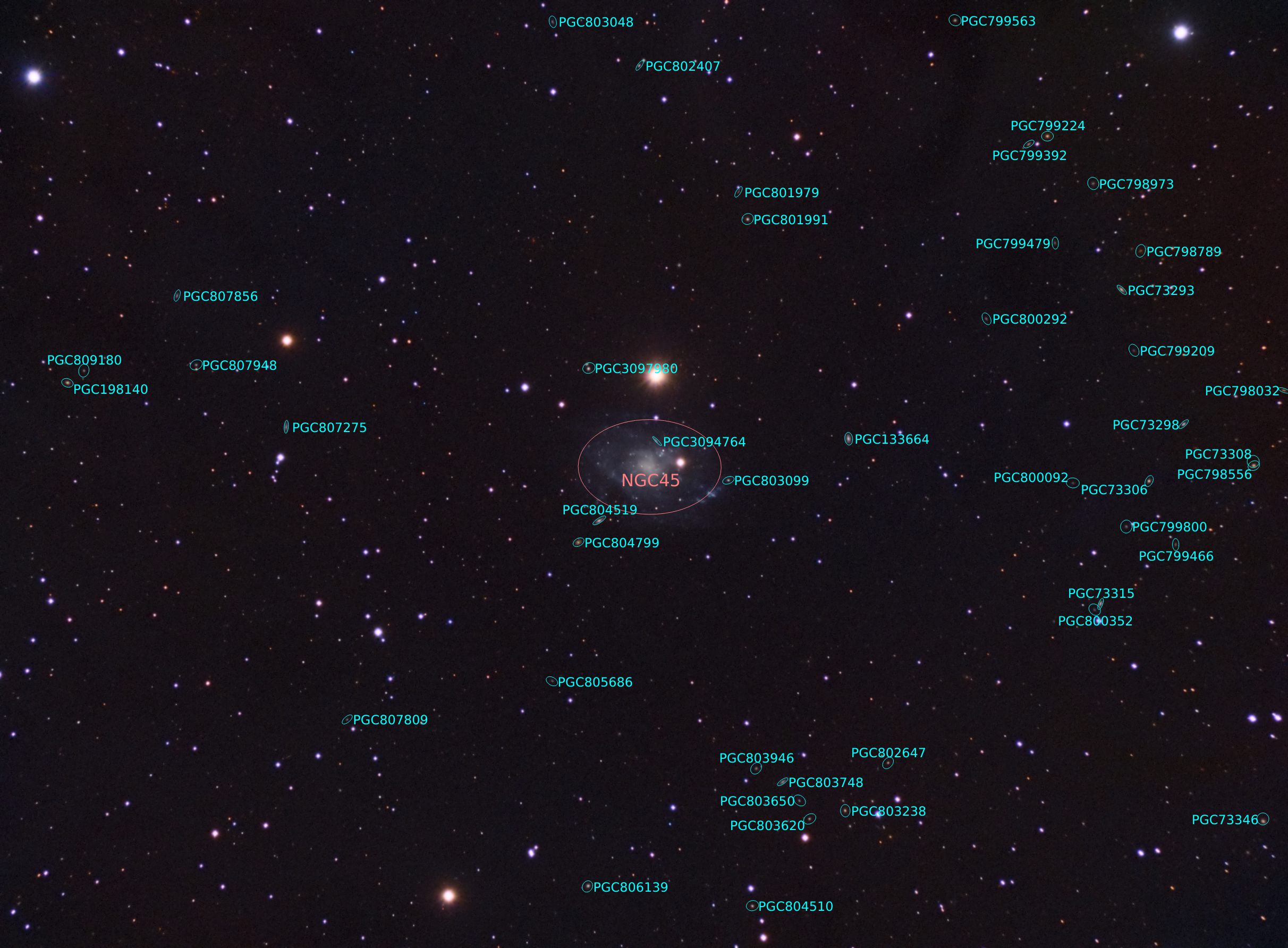
- Details
- Category: Galaxies
- Telescope: Explore Scientific 127 Refractor
- Camera: ZWO 2600 MM
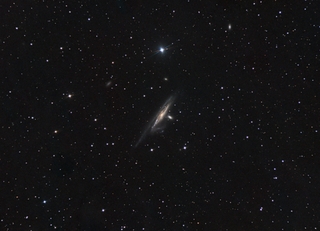
- Constellation: Eridanus
- Right Ascension: 04h 12m 04.3s
- Declination: −32° 52′ 27″
- Distance: 57.8 million ly
- Galaxy Type: SB(s)b pec
NGC 1532 is a barred spiral galaxy located in the constellation of Eridanus. Interactions with other galaxies, notablly the dwarf galaxy NGC 1531 has created tidal streams from NGC 1532. Numerous background galaxies are also visible in the image.
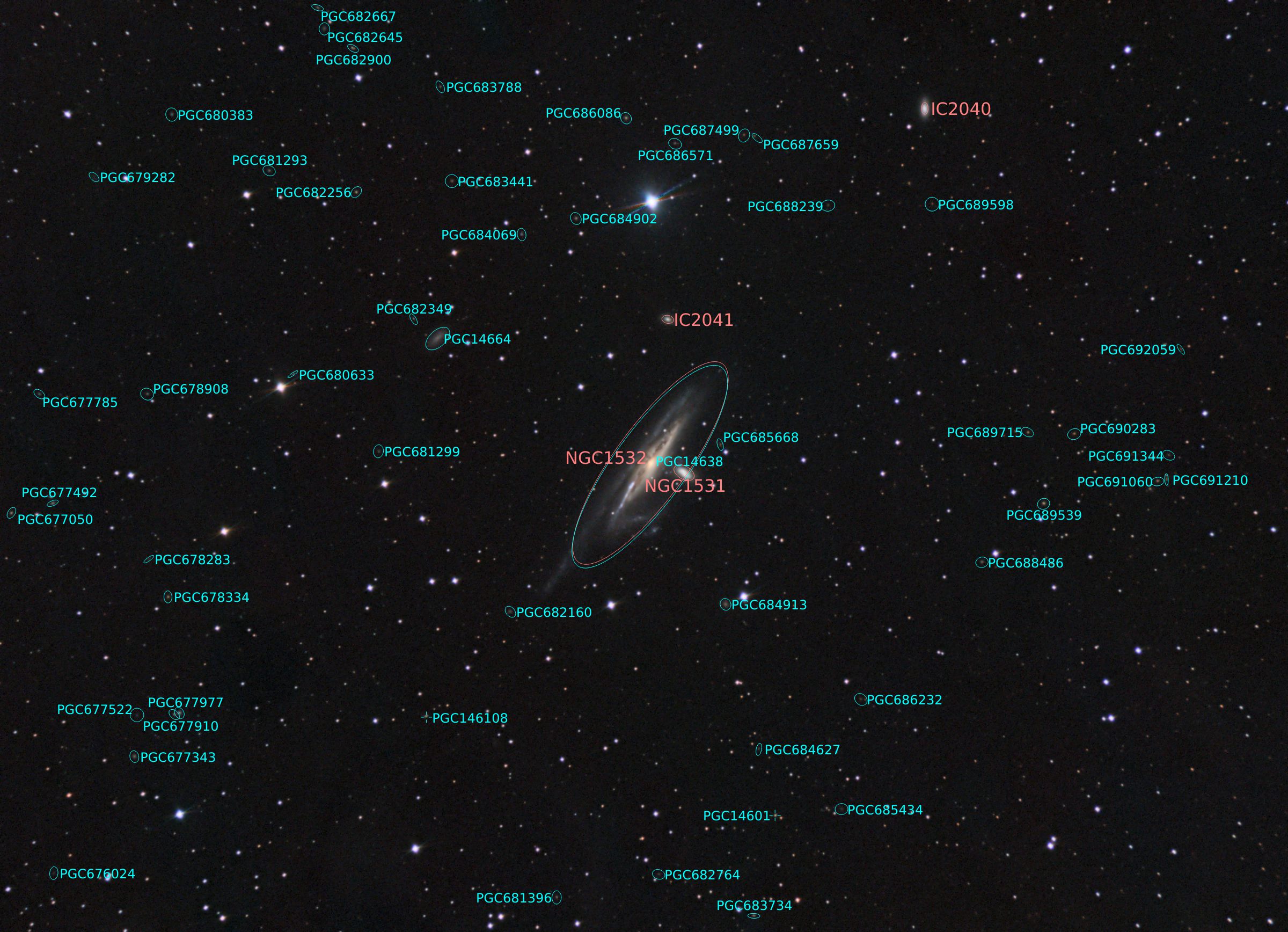
- Details
- Category: Galaxies
- Telescope: Explore Scientific 127 Refractor
- Camera: ZWO 2600 MM
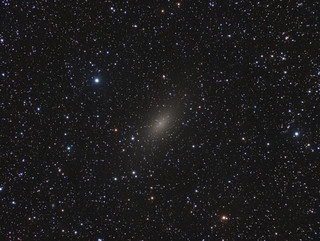
- Constellation: Cassiopeia
- Right Ascension: 00h 33m 12.1s
- Declination: +48° 30′ 32″
- Distance: 2.53 million ly
- Galaxy Type: dSph/dE5
NGC 147 is a dwarf spheroidal galaxy located in the constellation of Cassiopeia. It is a satellite galaxy of M31, the Andromeda galaxy.
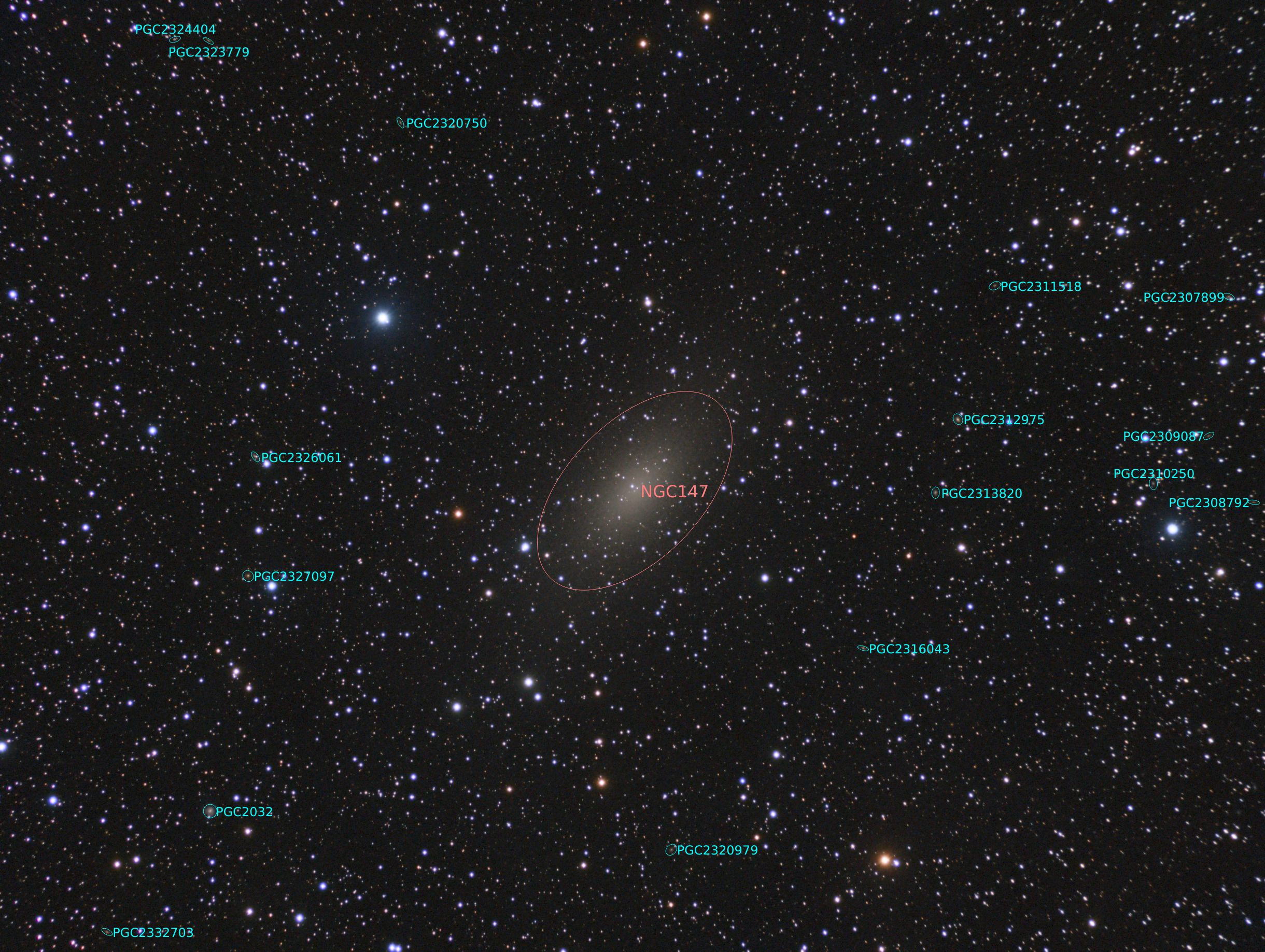
- Details
- Category: Galaxies
- Telescope: Explore Scientific 127 Refractor
- Camera: ZWO 2600 MM
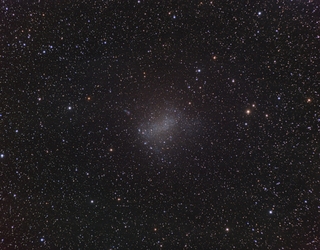
- Constellation: Sagittarius
- Right Ascension: 19h 44m 56.6s
- Declination: −14° 47′ 21″
- Distance: 1.63 million ly
- Galaxy Type: IB(s)m
NGC 6822 is smaller barred irregular galaxy. It's the closest of the Local Group of galaxies that is not a satellite of the Milky Way Galaxy.
- Details
- Category: Galaxies
- Telescope: Explore Scientific 127 Refractor
- Camera: ZWO 2600 MM
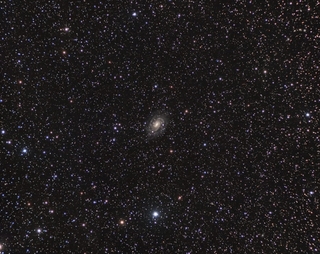
- Constellation: Ophiuchus
- Right Ascension: 17h 32m 24.302s
- Declination: +07° 03′ 36.97″
- Distance: 77 million ly
- Galaxy Type: SAB(r)bc
NGC 6384 is a barred spiral galaxy located in the constellation of Ophiuchus. Classified as a type SAB(r)bc galaxy with loosely wound spiral arms, and a central bar.
- Details
- Category: Galaxies
- Telescope: Explore Scientific 127 Refractor
- Camera: ZWO 2600 MM
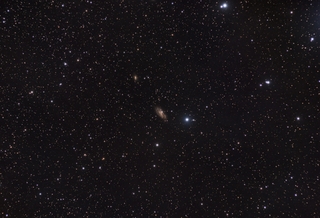
- Constellation: Camelopardalis
- Right Ascension: 3h 48m 20.6s
- Declination: 70° 7' 59.16"
- Distance: 66 million ly
- Galaxy Type: SABc
UGC 2855 (PCG13880) is a barred galaxy in the constellation of Camelopardalis. It has an interesting bar that large percentage of molecular gas which is unusual. Starburst activity is possibly caused by interactions with UGC 2866 (PGC13943).
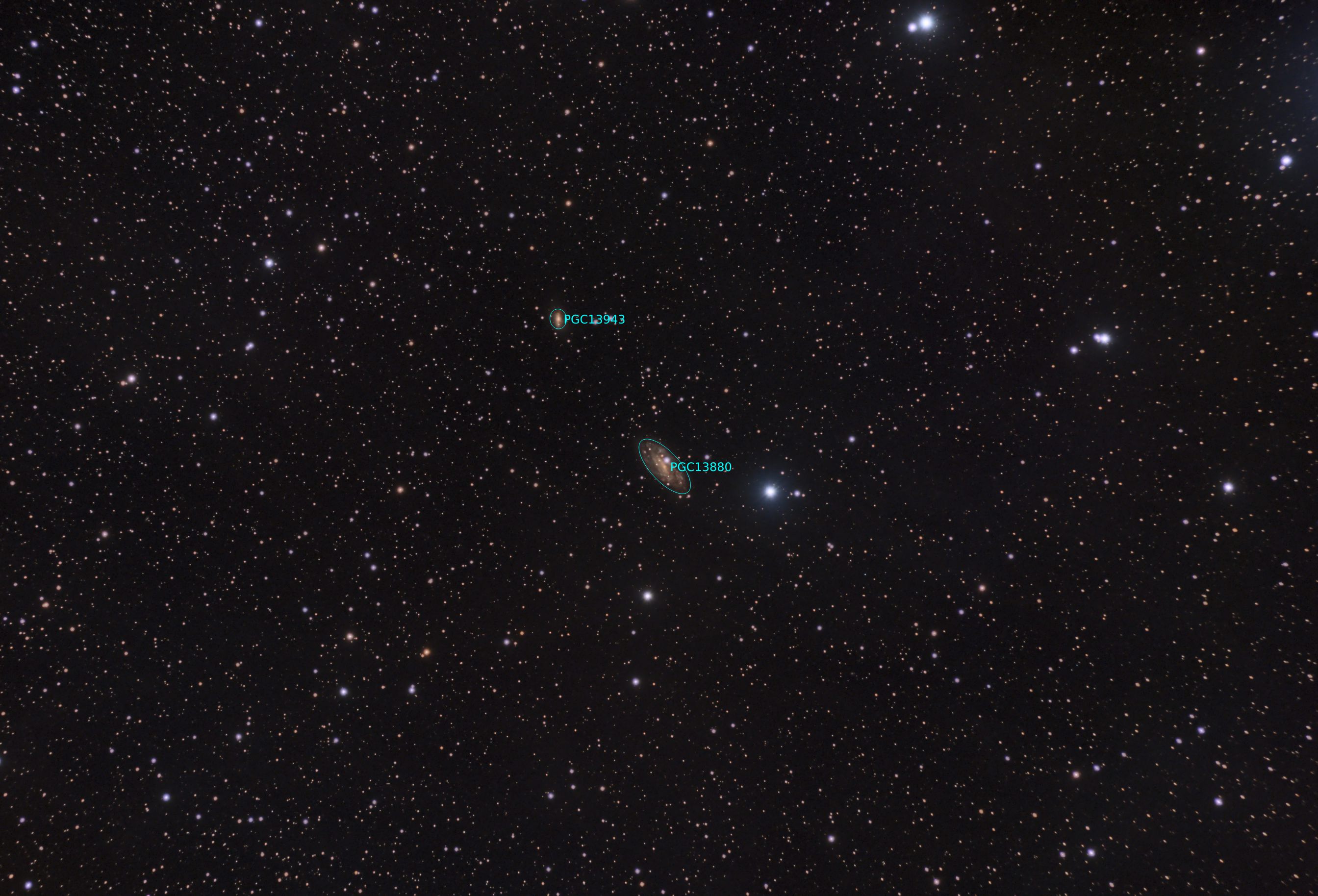
- Details
- Category: Galaxies
- Telescope: Explore Scientific 127 Refractor
- Camera: ZWO 2600 MM